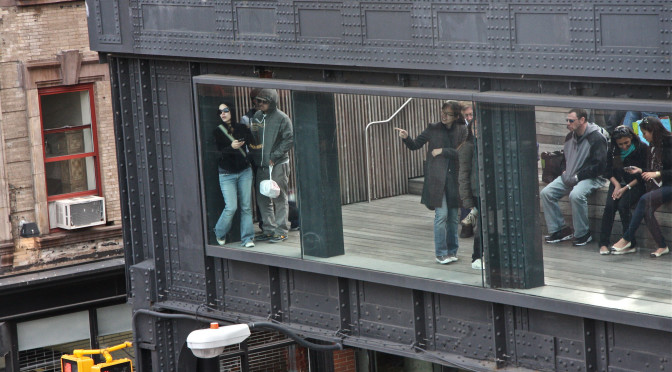William H. Whyte (October 1, 1917 — January 12, 1999) was an American urbanist, organizational analyst, journalist and people-watcher. ((http://en.wikipedia.org/wiki/William_H._Whyte))
While working with the New York City Planning Commission in 1969, Whyte began to use direct observation to describe behavior in urban settings. Employing still cameras, movie cameras, and notebooks, Whyte described the substance of urban public life in an objective and measurable way. ((http://en.wikipedia.org/wiki/William_H._Whyte))
He not only proved that the street-level social activity of people could be quantified, but upended the popular wisdom of the time that people-space and street-space were incompatible. He described the street as “the river of life” and people-watching its principle activity. He identified seven elements that seed a space for lively activity:
Sittable spaces – Must be comfortable (right height and width) and offer a variety of fixed and movable options, including walls, stairs, double-sided benches and individual chairs
The street – Spaces have proximity and good connection to, the street
The sun – Can be direct or reflective; it’s about access to ‘light’
Food – Include carts, cafes, or snack bars; people who eat attract more people
Water – Accessibility to rivers, ponds, and interactive water features create welcoming, social spaces
Trees – Create a defined canopy; open to the action but also intimate
Triangulation – Things, actions, or activities that act as magnets to bring people together e.g. art installations, buskers, skating rinks, dance floors; performers provide a connection between strangers and acquaintances; art has “a kind of Venturi affect”, stimulating pedestrian flow and attracting people.
While focussed on urban spaces, his observations are equally applicable to suburbs, small towns and villages. Whyte emphasized the need for appropriate scale and condensed public spaces for these types of low-density areas.
My own village, founded in 1793, has transformed from wilderness to frontier wagon-stop, through sustainable, working village, and eventually into a bedroom community when the railroad passed it by. A few years ago our general store, the last vestige of business and street life, closed. No more Friday night ice cream cones or random conversations between neighbours and strangers who stopped by for milk, smokes or directions. One less reason for the cyclists, snowmobilers, hikers and tourists to stick around and add their energy into the local mix. One more nail in the coffin of vitality. What an element of food and triangulation wouldn’t do for an otherwise lovely place.
In 1979, Whyte released his documentary The Social Life of Small Urban Spaces in cooperation with the Municipal Art Society of New York (MAS) and the following year published a book of the same name. Retro style aside, the human behaviour in the film remains relevant and his warm narrative style brings the lessons to life.
Further reading:
